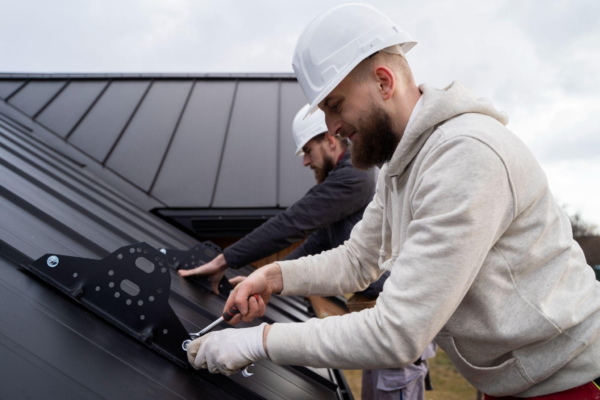
Source: freepik.com
Roofing for commercial buildings offered unique challenges as compared to roofing settings for residential or any other building. It varies in scale, complexity, and specific requirements related to commercial structures. From large office complexes and retail centers to industrial facilities and warehouses, including storm damage roof repair, commercial roofs must be able to manage heavy traffic, equipment installations, and exposure to the elements while maintaining energy efficiency and compliance with building structure.
Roofing has come with various challenges because in this case, it is essential to maintain substantial standards that also fulfill efficiency and sustainability.
Following are some challenges that one can face during the process of roofing for commercial buildings:
Complexity of Roof System
One of the primary challenges in commercial roofing is the large size and complexity of the roof systems. Commercial buildings often have expansive roof areas comprised of multiple levels, complex infrastructures, and various penetrations such as HVAC units, skylights, and vents. This complexity can make installation, repair, and maintenance tasks more challenging and time-consuming.
Minimizing Disruptions
Another significant challenge in commercial roofing is ensuring durability and longevity while minimizing disruptions to business operations. Unlike residential buildings, commercial properties are typically occupied and operational during roofing projects, going through challenges and stringent safety considerations.
Rules and Regulations
Additionally, strict building codes are implemented on construction sites with regulations and industry standards that follow up design, materials, and installation practices. Compliance with these requirements is essential to maintain the structural integrity, safety, and performance of the roof system.
Energy Efficiency
Energy efficiency is another essential consideration in commercial roofing, as the cost of energy continues to rise, and building owners look for ways to reduce operational expenses. Implementing proper insulation, ventilation, and reflective materials can help improve energy efficiency and reduce heating and cooling costs.
Apart from these challenges, it is also very important to address them instead of just identifying them. Following are some solution techniques that could be implemented to resolve these issues:
Proper Planning
To address this challenge, roofing contractor must have the expertise, resources, and equipment necessary to handle large-scale projects efficiently. Proper planning, coordination, and communication among the roofing team are essential to ensure that the project progresses smoothly and meets deadlines.
Minimizing Disruptions
Roofing contractors must implement strategies to minimize disruptions to customers, and employees while maintaining a safe working environment. This may involve scheduling work outside of business hours and coordinating closely with building managers to address any concerns or requirements.
Conducting Inspections
Roofing contractors can recommend and install energy-efficient roofing systems that meet specific needs and fulfill constraints related to the budget of commercial building owners. Additionally, incorporating renewable energy solutions such as solar panels or green roofing can further enhance energy efficiency and sustainability.
By addressing issues such as project scale, occupant safety, regulatory compliance, and energy efficiency, roofing contractors can overcome these challenges and deliver high-quality roofing solutions. With the help of effective communication, collaboration, and a commitment to excellence, roofing contractors can navigate the complexities of commercial roofing projects and achieve success in this demanding and rewarding sector of the industry.